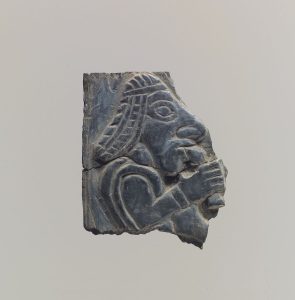October 2023 | BIPS Travel Grant
The Hasanlu Ivories viewed through a New Materialist lens
My research focusses on the ivories recovered during the excavations of Hasanlu in north western Iran. These were largely recovered from the demolition layers of c.800BC, in the Iron Age. The people of Hasanlu did not appear to have a written language, so in many ways they are very mysterious. The settlement lay in a fertile area which bordered multiple regions and kingdoms/peoples but its affiliations are not yet understood. Through the application of archaeological theory, particularly the New Materialisms, to the ivory of Hasanlu, I am hoping to better understand the relationship of the people of the settlement and the ivory and thus contribute to our understanding of them and how they chose and used their material culture.
Oscar Muscarella published a catalogue of the ivories in 1980, including ivories held in the Metropolitan Museum of Art in New York, The Penn State Museum in Pennsylvania and the National Museum of Iran in Tehran. A review of these and additional ivories was carried out by Megan Cifarelli, published in 2022. There have been a small number of articles that have considered specific/individual ivories but it is clear that there is room for further study and understanding of these objects.
The generous travel grant awarded to me by the British Institute of Persian Studies (BIPS) enabled me to travel to New York to handle the part of the collection that is held by the Metropolitan Museum of Art (The MET). It also enabled me to view and handle other objects from this site and time period to compare their styles and decoration with the ivory to explore whether there were any comparisons or patterns that could reveal more about the people who made and consumed these items.
I travelled to New York in the week before Christmas, 16th to the 23rd December 2023. When I arrived at the MET, I was met by Sarah Graff, a Curator, and Daira Eden Robert, the Collections Manager of the Near and Middle Eastern Civilisations department. I was also introduced to Shawn Osborne, Principal Departmental Technician, who assisted me with handling the collection throughout my time at the MET. They were all incredibly helpful and knowledgeable. I was also briefly introduced to other members of the staff at the Museum, who were equally friendly and welcoming. I am incredibly grateful for their help and advice. Their support was especially helpful as the Ancient Near Eastern Art Gallery at the MET is currently closed for renovation, so these objects are carefully stored rather than on public display.

Furniture plaque carved in relief with man holding vessel to his mouth, ivory. MET accession no.65.163.16. Image courtesy of the MET Museum.
The team at the MET allowed me to handle 73 objects and groups of objects during my time with them, including all of the ivory they hold. Despite having seen the dimensions written down previously, I was still amazed by how small the ivory pieces were, as they hold such detail and dimension. Clearly the craftspeople who carved them were incredibly skilled and it is easy to see how alluring they must have been prior to the destruction of the settlement. The other objects I handled included stamp seals, pottery, tiles, wall decorations, moulds, bracelets and wooden objects. Some of the designs and themes of these pieces were very different to the scenes depicted on the ivories and this has given me much food for thought. I was able to take lots of photographs of the objects I handled for further consideration during my study. As part of their Open Access policy, the MET allows their images to be used freely and, as these are high quality and are in the process of being updated to colour images, I will also use these for my study and for final images in my thesis, as well as any publications I am able to make from my research.
Being able to get so close to the material culture of the people of Hasanlu gave me a real appreciation of the objects they chose to surround themselves with and has given me a lot of new questions to ask in my research. I am looking forward to the reopening of the Ancient Near Eastern Art Gallery of the MET in 2026, so that I can see the Hasanlu material on display.
—
I am very thankful to BIPS, without whom this trip would not have been possible. I am also thankful to the Ancient Near Eastern Department of the MET for their kindness and help during my visit. My thanks also go to my PhD supervisory team, Prof. Louise Steel and Dr. Ros Coard, for their support and advice during my studies and to Dr. Megan Cifarelli for her help and encouragement.
Natalie Boyd is a PhD student at the University of Wales, Trinity St. David.